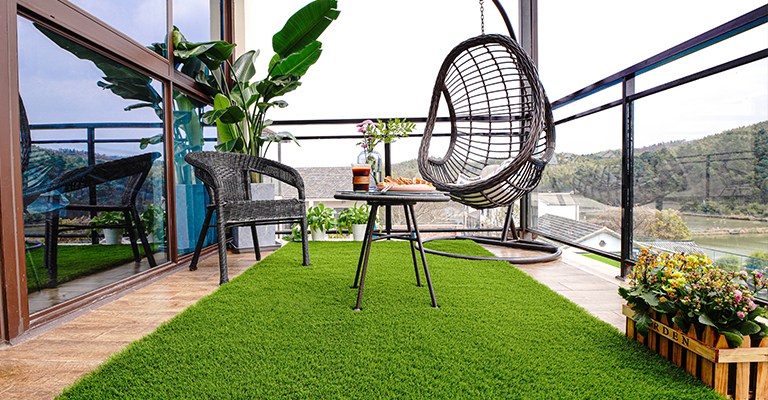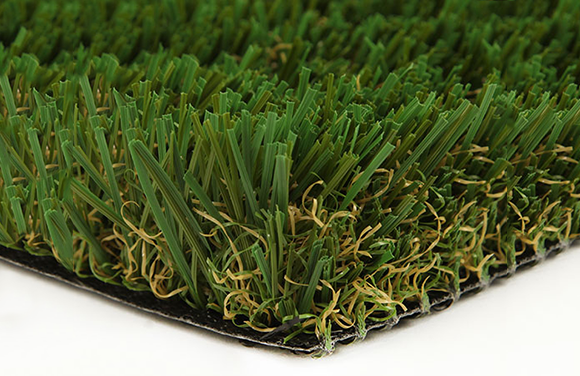Top Phoenix Turf Companies Offering Premium Synthetic Grass Solutions
See Why Homeowners Prefer Artificial Turf for Lasting Landscape Design Practices
As house owners progressively focus on sustainability in landscape design, synthetic grass has become an engaging option to standard grass. Its ability to preserve water, reduce maintenance initiatives, and lessen environmental impact settings it as a practical selection for those looking for green solutions. The aesthetic charm and flexibility of synthetic lawn provide to diverse design choices. Nevertheless, the ramifications of this shift expand beyond plain comfort and appearances, triggering a more detailed examination of exactly how these selections affect wider ecological end results. What remains to be discovered is the full scope of benefits that artificial turf can supply to house owners and the setting alike.
Water Preservation Conveniences
One of the most considerable advantages of man-made grass is its duty in water conservation. In contrast, synthetic grass eliminates this demand entirely, as it does not require watering.
In addition, the installment of synthetic grass can add to an extra lasting landscape. House owners can considerably lower their water expenses, enabling reallocation of resources to other environmental campaigns or house usages. Furthermore, synthetic lawn is made to stand up to different climatic problems without the demand for extra watering, making it a suitable option for regions encountering water deficiency.
The environmental advantages expand past prompt water savings. By reducing water intake, man-made grass helps to mitigate the effects of climate modification, protecting crucial communities that are intimidated by too much water extraction. As sustainable landscaping methods acquire grip, man-made turf becomes a liable option for property owners looking for to produce environmentally friendly exterior areas.
Lowered Upkeep Efforts
Synthetic grass dramatically decreases upkeep efforts contrasted to traditional grass yards. With artificial lawn, homeowners can get rid of the taxing tasks connected with all-natural landscaping, such as mowing, feeding, and weeding. This not only saves beneficial time but likewise lowers physical labor, making lawn care obtainable for individuals of every ages.
One of the most significant benefits is the lack of regular mowing. Conventional grass need constant cutting to maintain a visually pleasing elevation, whereas synthetic grass remains constantly lush without the requirement for cutting. Furthermore, home owners no more need to apply fertilizers or pesticides, which are frequently needed to keep natural grass healthy. This shift not only lightens the workload however additionally advertises a neater, extra consistent look year-round.
Furthermore, synthetic grass is durable and resistant, calling for very little upkeep past periodic brushing and rinsing to remove particles. This simplicity of maintenance allows home owners to appreciate their outdoor rooms without the continuous worry of upkeep, offering even more time for recreation and household tasks. Eventually, the minimized maintenance initiatives connected with fabricated turf make it an enticing option for those looking for a low-maintenance, aesthetically appealing landscape.

Environmental Effect Reduction
There is an expanding acknowledgment of the ecological benefits related to artificial grass, particularly in terms of water conservation and decreased chemical usage. Standard grass require significant amounts of water, specifically in drought-prone areas, leading to increased strain on local water resources. On the other hand, synthetic grass gets rid of the requirement for irrigation, substantially lowering water intake and advertising sustainability.
Furthermore, conventional lawn maintenance often involves the application of plant foods, chemicals, and herbicides, which can go to this site add to dirt and water contamination. Man-made turf mitigates this environmental risk by needing very little upkeep and virtually removing the requirement for harmful chemicals. This not just enhances soil health yet likewise safeguards neighborhood ecological communities from hazardous runoff.
Moreover, the production of all-natural turf lawns commonly includes using fossil gas for cutting and landscape design devices, further contributing to greenhouse gas exhausts. By selecting synthetic grass, property owners can dramatically reduce their carbon impact connected with lawn treatment activities.
Visual Charm and Versatility
Along with its environmental advantages, fabricated turf uses substantial aesthetic charm and adaptability for landscape design. Property owners can accomplish a lavish, environment-friendly appearance year-round, removing the seasonal fluctuations commonly connected with all-natural yard. This regular aesthetic not only enhances the visual charm of a residential property yet also adds to a polished and well-kept appearance.
In addition, synthetic grass is available in a variety of textures, colors, and styles, permitting for customization to match specific choices and style styles - Arizona turf. Whether made use of in property yards, industrial spaces, or recreational locations, it can perfectly integrate right into diverse landscaping layouts, from modern minimalist to rich exotic settings
The flexibility of synthetic grass extends beyond simple appearance; it can be installed in various areas, including rooftops, patio areas, and also indoor rooms, developing chances for unique landscape design options. Additionally, it appropriates for an array of activities, from youngsters's play locations to pet-friendly environments, giving performance without compromising design.
Eventually, the visual charm and versatility of fabricated grass make it an appealing option for home owners seeking lasting landscaping remedies that do not sacrifice elegance for environmental duty.

Long-Term Expense Cost Savings
Among one of the most compelling advantages of synthetic turf is its capacity for long-term cost savings. Unlike natural yard, which calls for normal upkeep-- consisting of mowing, watering, feeding, and insect control-- visit this site right here man-made grass dramatically reduces these continuous expenditures. Home owners can save a considerable quantity on water expenses, specifically in regions where water shortage is a pushing problem. The elimination of yard care solutions further contributes to monetary savings, as there is no demand for customized tools or labor.
Furthermore, synthetic lawn has a life expectancy of 15 to 25 years, depending on its top quality and usage. This resilience decreases replacement prices, making it a much more affordable selection over time. Additionally, the first investment in synthetic grass can often be recovered via the cost savings accrued gradually.
While the in advance price may seem greater contrasted to sod installment, the cumulative cost savings from reduced maintenance and water use usually outweigh these preliminary expenses. Ultimately, the adoption of man-made lawn not only advertises a lasting landscaping service however additionally offers property owners an economically wise option that aligns with long-lasting budgeting goals.
Conclusion
Synthetic grass arises as an engaging alternative for lasting landscaping, offering considerable advantages in water conservation, minimized upkeep efforts, and decreased environmental influence. Its visual allure look here and convenience enhance the visual landscape while aligning with modern sustainability goals. Lasting cost savings contribute to its beauty for property owners. As neighborhoods progressively prioritize ecologically pleasant methods, the adoption of synthetic turf stands for a dynamic action toward achieving sustainable and resistant landscapes.
In addition, man-made turf is made to stand up to various weather conditions without the requirement for supplemental watering, making it an ideal selection for regions encountering water scarcity. (Arizona turf)

Synthetic turf arises as an engaging choice for sustainable landscape design, using considerable advantages in water preservation, minimized maintenance initiatives, and reduced environmental impact.